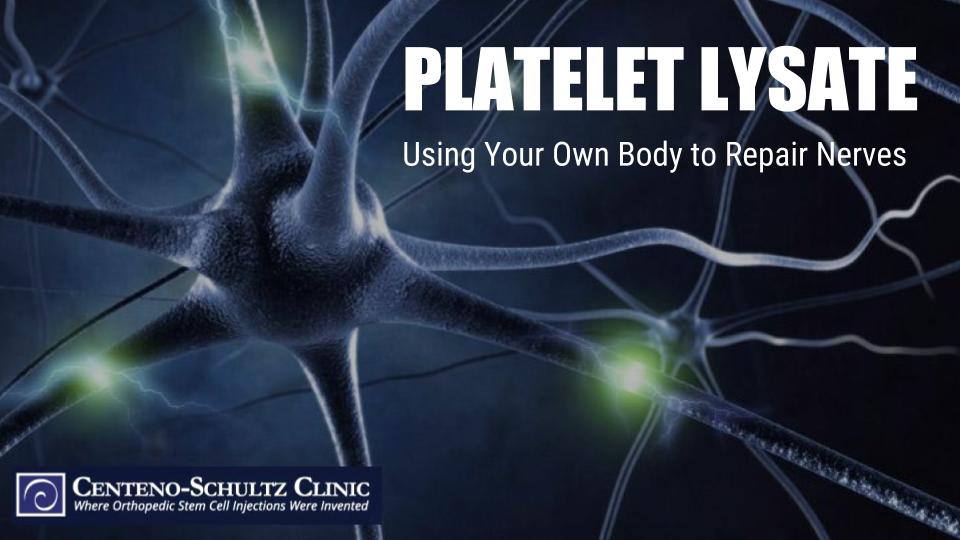Nerve injuries are terrible and can be quite devastating. Muscles that did work just fine and without a second thought suddenly seem to lack control or just stop working altogether. At our clinic, we treat patients with nerve injuries using our advanced fourth-generation platelet lysate, and today we want to highlight this treatment as well as the story of one of our patients who had a radial nerve injury.
The Function of the Radial Nerve
The radial nerve is a major nerve that branches off the spinal column at the neck and stretches all the way down the arm through the wrist and hand, supplying muscles (e.g., triceps and forearm muscles), joints, and skin along the way. When a nerve becomes injured, the tissue it innervates (supplies) beyond the injury site will lose function, and over time if left unaddressed, unsupplied muscles will atrophy (or waste away).
What Causes Nerve Injuries?
A nerve is a complex structure made up of axons (the “cables” that allow impulses to transmit from nerve to nerve), the myelin sheath (the nerve covering that acts kind of like wire insulation), a blood supply to feed the cells, and much more.
One common way a nerve can become injured is through compression. Nerve compression occurs when something is restricting, pressing on, or pinching the nerve somewhere along the nerve branch. When a nerve is compressed, it can not only cause inflammation and decrease blood supply, but the nerve can also become scarred. You can imagine the compressed nerve axon as being similar to a kinked garden hose. Everything is fine as the signals travel along the nerve branch, until they reach the compressed nerve, and like water unable to pass through a kinked hose, the signal (blood supply and nutrients) can’t pass through to supply the tissues on the other side of the compression. This results in an unhealthy nerve, which might be evidenced by numbness, tingling, or weakness in the area it supplies. Scarred nerves can also cause other problems; for example, muscles may have trouble moving against each other.
Patient with Radial Nerve Injury Seeks Regenerative Treatment
Greg is a 58 year-old patient who had previously suffered a fracture to the humerus bone in his upper arm. In this patient’s case, the injury to his radial nerve was the result of fracture-repair hardware (a screw) that had been placed too close to his radial nerve. Greg’s nerve injury presented as the inability to extend his wrist. After a second surgery and physical therapy were both unsuccessful at restoring the nerve, surgeons determined his nerve injury was permanent. Not willing to give up, Greg decided to seek alternative options for his scarred radial nerve and made his way to us.
Treating Nerves with Platelet Lysate
To treat the nerve, we map out the nerve course using our advanced ultrasound techniques. We then perform a precise injection around the nerve of our fourth-generation platelet lysate (PL). The PL is rich in growth factors, which helps improve blood supply to the scarred nerve. Learn more about PL and these growth factors by watching our brief video below:
As fluid is injected, this helps break up the scar tissue at the nerve. Our video below shows an actual precise high-resolution ultrasound of this injection. Here, Dr. Centeno is performing a microinjection using a tiny 30-gauge needle to treat the scarring of a median nerve. In the video, you will see dark fluid (the concentrated growth factors isolated from the patient’s own platelets) as it fills up the space around the scarred nerve.
Greg’s Radial Nerve Platelet Lysate Treatment
Greg’s radial nerve treatment consisted of precise ultrasound-guided platelet lysate hydrodissection. We performed three treatments running the entire mapped course of his radial nerve. We also used a similar process to break up the scar tissue that had formed between the muscles the radial nerve supplied. What was his outcome? Greg had good results and was able to recover nerve function that allowed him to extend his wrist again!
While Greg is only one patient, we’ve seen many patients with similar nerve regeneration results after receiving our fourth-generation platelet lysate treatment. When dealing with nerve injuries, it’s always best to avoid surgery whenever possible as surgery often results in more damage to the highly complex nerve structure. Nerve regeneration using precise guidance is a revolutionary treatment, and we’ve seen many successful outcomes after treating nerves with platelet lysate.
